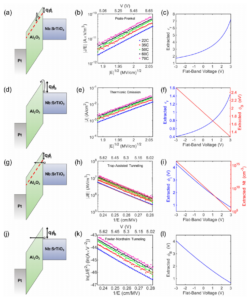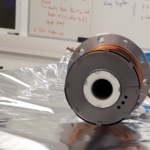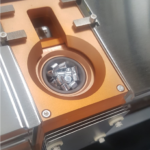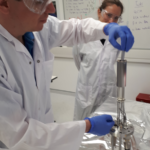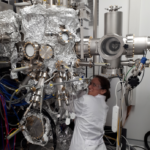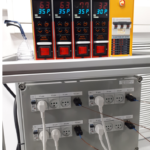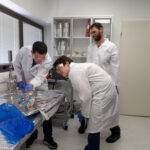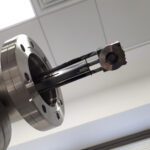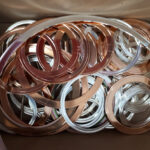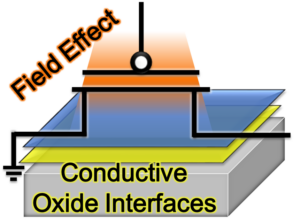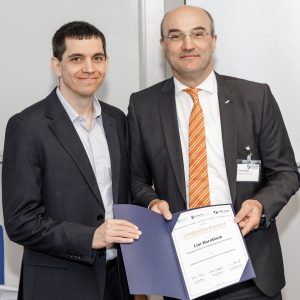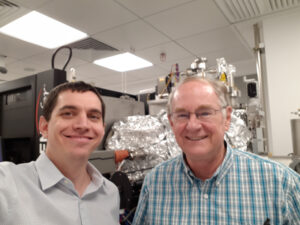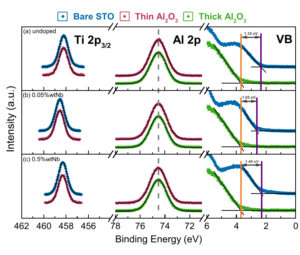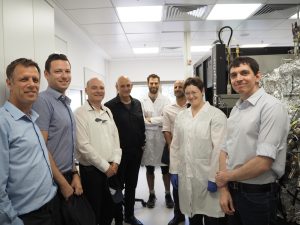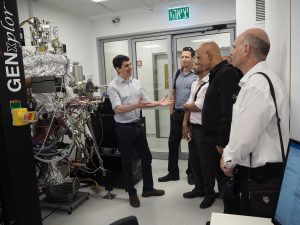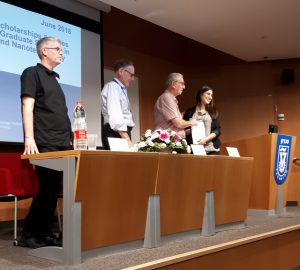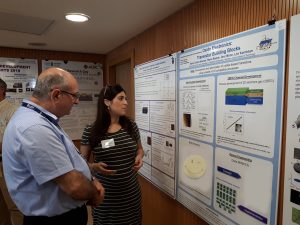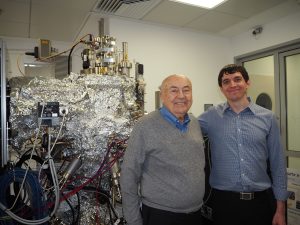Congrats to Dror for publishing his first paper and being selected for Editor’s Pick in JAP.
In Understanding leakage currents through Al2O3 on SrTiO3, Dror and the team examined the insulating character of thin Al2O3 on the oxide semiconductor SrTiO3. They thoroughly analyze the possible conduction mechanisms and show that defects in the insulator are responsible for the leakage currents. These defects can be mitigated by an anneal in oxygen, which results in reduction of the leakage and a crossover of the conduction mechanism to FN tunneling (see figure).
Equally important, it is shown that determining the conduction mechanism is challenging without knowledge of the flat band voltage, and a new approach is presented for such cases.
This work represents one more building block for oxide electronic devices that are currently being developed in our group.
